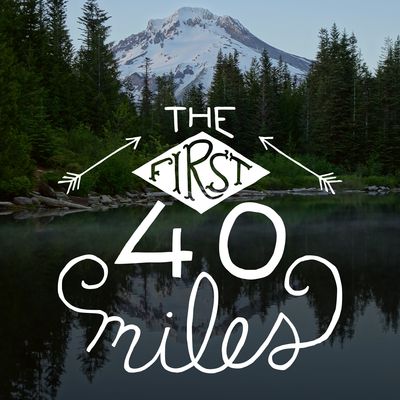If you're new to backpacking, or if you’re hopelessly in love with someone who wants you to love backpacking, then this podcast is for you. We’ll talk about the essentials, how to lighten your load, and how to make the most of your time on the trail.
https://www.thefirst40miles.com
149: Friends of the Flora
Show Notes: Episode 149
Today on the First 40 Miles, if you want to be a friend of the forest, get to know the flora. We’ll share some ways to make your next trip more rich as you get to know the plants that surround you. Then we’ll review a new ultra-durable, refillable lighter. For today’s Backpack Hack of the Week, you’ll learn a plant-geek approved way to bring forest samples home for further study.
Opening
* Plant identification
* Why would you want to identify plants?
* Does it ruin the experience or enrich the experience?
* Our family goal…to get better at plant identification
Top 5 Ways to Become Familiar with Plant Life
Look at the Big Picture
* Find out what’s in your area—search your state
* http://www.oregon.gov/ODF/Documents/AboutODF/NativeTreesPlants.pdf
* https://en.wikipedia.org/wiki/List_of_native_Oregon_plants
* Even just a brief search will open your eyes and help you to see if there are plants you already are familiar with.
Stop, Sit and Study
* On the Trail: One of the great ways to really get to know a plant is to sketch it. When you sketch a plant, you take nothing for granted. You look at every edge, every node, every bump. And if the entire plant it too much to sketch, focus on one leaf.
* What are the edges of the leaf like, how is it attached to the branch, can you see the veins, are there injuries or evidence of animal, fungal or bacterial damage to the leaf? Even if you don’t know the name of the plant, it is one you’ll be able to identify if you see it again.
* Also, when you study, don’t be afraid to touch, smell the plant, look under the leaves, see what else is growing around it…
* Off the Trail: Check for a formal course of study through your state’s Cooperative Extension office
* Here in Oregon we have the Oregon Master Naturalist Program http://oregonmasternaturalist.org/
Rehike the same area
* A hike you’re familiar with
* This gives you a chance to tune in and notice things
Photograph what you see
* Macro setting on camera, get up close with all parts of plant
* You can study the photos, familiarize yourself with them, even share them with the local extension office to see if they know what it is.
* Apps for plant ID: PlantNet and iNaturalist app
Take a Sample
* Josh’s brother, Ben, works in the University of Washington Herbarium where they collect plant samples
* Sample collection protocol
SUMMIT Gear Review™: Exotac titanLIGHT
Structure
* The EXOTAC titanLIGHT is a refillable, waterproof lighter and with a replaceable flint and wick. Made from aircraft grade aluminum, it has O-ring seals for longer intervals between lighter fluid refills.
* CNC router (Or Computer Numerical Control router) is a computer-controlled cutting machine used for cutting various hard materials, such as wood, composites, aluminum, steel, plastics, and foams.
Utility
* Waterproof lighter with a replaceable wick, replaceable flint
* Has a lanyard loop at top
* Wind guard
* One nice feature is that it comes off with a 3/4 turn, so it’s secure enough to keep the fuel from evaporating, but not so secure that it takes a long time to get the top off.
Mass
* Weighs 1.6 oz. (46 grams)
* When filled weighs 1.9 ounces
Maintenance
* Fill with lighter fluid specifically for lighters (Ronsonol or Zippo brand)
* Waterproof to 1 meter
Investment
* $49.95
